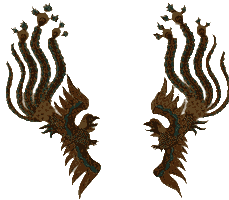Life of Pak Kahir
Life of Pak Kahir (An excerpt translated from Gema Pencak Silat Vol.3 No. 1:18-19)
The founder of Silat Cimande, Pak Kahir, first became known as a feared and respected pendekar around 1760, when he first introduced his mem'po Cimande jurus to his students. It was these same students who later spread the art to the other districts like Batavia, Berkasi, Cikampek, Cianjur, Bandung, Tasik Malaya, Garut, Sumendang, Ciamis, Kuningan and Cirebon. As a horse trader Pak Kahir would often travel far from his home village of Cogreg in Bogor. It was while on these business trips that he would be accosted by bandits and thieves. Thanks to his fighting skills they could never rob or harm him. On his many trips to the cosmopolitan port city of Batavia he met and befriended Minangkabau and Chinese fighters and pendekars residing there. He used the opportunity to exchange knowledge as well as to test his skills against theirs. This interaction with fighters from other cultures allowed him to gauge the effectiveness of his art.
While on a visit to Cianjur, he met Raden Adipati Wiratanudatar (1776-1813) the Sixth Regent of Cianjur. Not long after that meeting, Pak Kahir decided to move to Cianjur where he set up his home in the village of Kamurang. When the Regent found out that Kahir was a martial arts expert he requested him to teach his family. To prove Kahir's fighting ability to the public he also arranged for him to fight against a Chinese Macao Kuntao expert. The fight was held on the Cianjur esplanade and was won by Pak Kahir. His victory over the Kuntao fighter made him even more popular around the regency of Cianjur.
In 1815, with his five sons Endut, Ocod, Otang, Komar and Oyot, Kahir moved back to Bogor. These five sons of his would later spread the Cimande art throughout Tanah Pasundan (Sundanese heartland). Meanwhile in Bogor, one of his student by the name of Ace continued the propagation of Cimande around the area. Ace's descendants who today still live in the Tarikolot area are known as the elders of a cimande system popularly known as Cimande Tarikolot Kebun Jeruk Hilir.
The early 19th century were the greatest years of Cimande. It became the most popular form of pencak silat in West Java. So much so that the clothes worn by Pak Kahir became accepted costumes of pencak silat even till today.
Pak Kahir died in 1825. His fighting art has continued to be well received by the West Javanese community. In some cases, the fundamentals of his teachings has been further expanded upon by students like Sera' and Haji Abdul Rosid. Haji Abdul Rosid while formulating his own style of Ciwaringin, altered some of the Cimande jurus. But these changes have not moved far away from the original mem'po Cimande moves.
Today, Cimande is practiced in all corners of the world in one form or
another. As a result of Pak Kahir not leaving any written documentation
of his techniques there are now many Cimande groups. The absence of a
formal Cimande organisation has also resulted in many groups being established
who do not recognised each other any more. Without standardisation of
the art the teachings and history of the art relies heavily on oral traditions.
back
to main page • back to reflections
